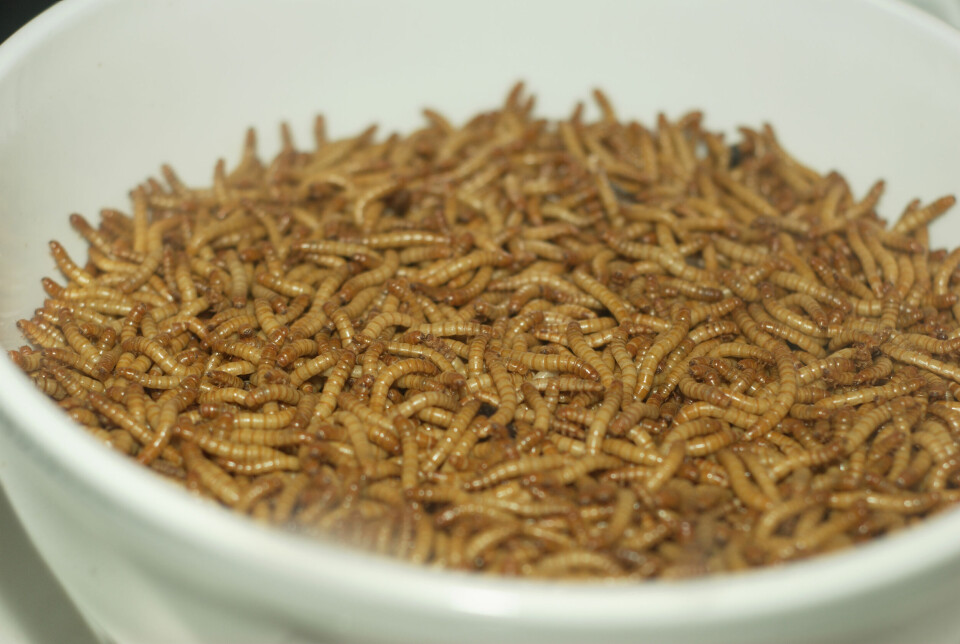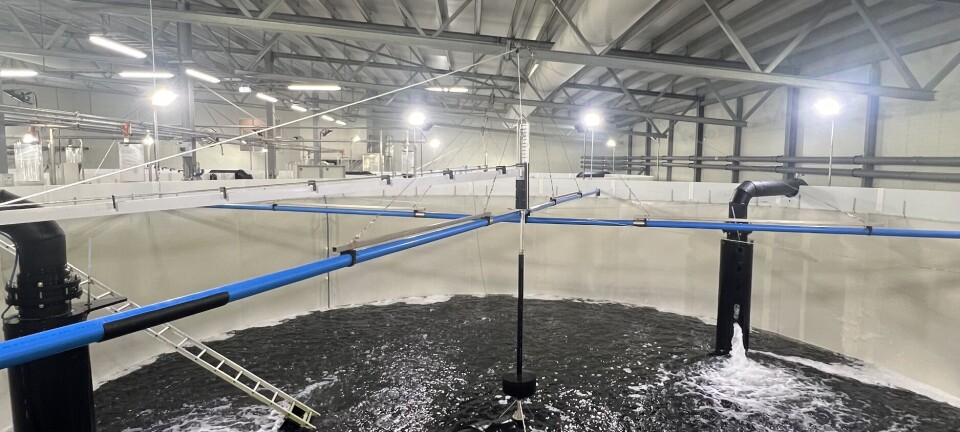LandbasedAQ.com

How mealworms in feed affect growth in post-smolts
Researchers from Norwegian and Danish research institutions, plus feed producer BioMar, have conducted a new study examining full-fat larval meal from black soldier flies and mealworms as potential protein-rich alternatives in aquaculture
The research is the first to report on the effect of full-fat mealworm meal on post-smolt salmon, an important phase in the aquaculture process. The results show that the addition of both black soldier fly larvae and mealworms in the feed did not negatively affect growth. Furthermore, the study shows that insect meal can be a sustainable alternative to traditional fish meal and plant-based ingredients in fish feed.
Despite growth and nutrient uptake not being affected, a higher blend of mealworm meal (30%) led to reduced protein quality and lower protein digestibility. At lower levels, such as 5-10% black soldier fly larvae and 15% mealworm meal, no negative effects were observed.
The researchers highlight that future studies should focus on how feed processing methods can improve the protein quality in mealworm meal before higher blending levels can be commercially recommended.
With increasing demand for fish feed as part of the growth in the aquaculture industry, insect meal can help reduce dependence on fishmeal and imported plant proteins. It can also be an important measure to achieve the Norwegian government's goal of increasing the use of domestic raw materials in fish feed.
Experiments and results
The study describes the effects of full-fat meal from black soldier fly (Hermetia illucens) and yellow mealworm (Tenebrio molitor) on amino acid derivatives in the feed as well as growth performance and nutrient utilisation in Atlantic post-smolt salmon fed with insect meal.
A 74-day growth trial was conducted with 520 fish (143 g ± 12.8 g); these fish were fed either a control diet (CO) containing 20% fishmeal, 20% soy protein concentrate (SPC), 14% wheat gluten, 19% plant-based materials, 13% fish oil, and 6% rapeseed oil, or one of four insect meal diets, made with either 5% and 10% larval meal from black soldier flies (BS5, BS10) or 15% and 30% mealworm meal (MW15, MW30). Mainly SPC, wheat gluten, and rapeseed oil were replaced. The inclusion levels for BS and MW were determined based on their different chemical compositions, especially their lipid content.
The fish were obtained from the commercial producer Salten Smolt AS, and during the experiment were kept in tanks at the Research Station of Nord University, Bodø. A total of 20 indoor aquaculture tanks (760 litres) were used for the feeding experiment. Each of these tanks was filled with 26 fish with an average weight of 143g (± 12.8 g).
All tanks, which were part of a flow-through system, were supplied with seawater with a salinity of 34 parts per thousand from a depth of 250 metres (from Saltenfjorden; 67°11'28" N 14°00'01" E), and the flow rate was maintained at 1,000 L/h. The temperature in the aquaculture water and dissolved oxygen were measured daily; the average values were 7.6± 0.9°C and 86.7± 0.11 % respectively. A 24-hour light regime was used throughout the experimental period.
Regarding the results, HPLC-based high-speed data on amino acid derivatives showed the following: carboxymethyllysine was significantly higher in the MW30 feed than in the BS5, BS10, and MW15 feeds; carboxyethyllysine was higher in the MW15 and MW30 feeds compared to the others; furosine was lower in the MW15 feed compared to the CO, BS5, and MW30 feeds.
Regarding the effect of insect meal on post-smolt, the inclusion of such ingredients had no significant effect on feed utilisation rate, health measurements, or the retention efficiency of macronutrients.
Apparent digestibility coefficients (ADC) for dry matter, lipid, ash, and energy were not significantly different.
However, protein breakdown in the 30%-MW group (80.4%) was significantly lower (P ≤ 0.05) compared to the control and BS5 group (84.5%).
Furthermore, ADC for protein was found to decrease linearly with increasing levels of insect meal, where MW showed a significant correlation (adjusted r2 = 0.77, p = 0.014).
"Overall, our study highlights the effectiveness of 5 and 10% BS and 15% MW as ingredients in the diet for Atlantic salmon. Other important points include undesirable amino acid derivatives and a reduction in protein breakdown associated with 30% MW in the diet of Atlantic salmon. Future studies should therefore focus on the effects of feed processing on the protein quality of mealworm before higher inclusion levels can be recommended to the feed industry," the researchers write.





















